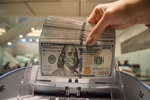"The unexpected increase is the result of a bounce back in energy price inflation after the strong negative base effect in March, and slightly higher service price inflation," Carsten Brzeski, global head of macro for ING, a financial services company, said according to Xinhua.
According to Eurostat, energy price inflation in the eurozone was 2.5 percent in April year-on-year, up from minus 0.9 percent the previous month. Services price inflation was 5.2 percent, slightly above the 5.1 percent registered in March; while food, alcohol and tobacco prices were 13.6 percent higher in April than in the same month of 2022 (down from 15.5 percent in March).
Non-energy industrial goods price inflation was 6.2 percent, compared to 6.6 percent in March, Eurostat said.
Among the eurozone member states, the annual inflation rates for April were the highest in Latvia (15 percent), Slovakia (14 percent) and Estonia (13.2 percent), while the lowest annual inflation rates were registered in Luxembourg (2.7 percent), Belgium (3.3 percent) and Spain (3.8 percent).
"Inflation divergence across the monetary union is high, reflecting different government energy price caps, subsidies and pass-throughs from wholesale to retail energy prices," Brzeski said.
He said that headline inflation is expected to keep falling, driven by negative base effects on energy and food prices and dropping selling price expectations in industry. However, these will probably be countered high selling price expectations in services and an increase in wages, according to Brzeski.
Inflation in the eurozone has switched from a supply-side issue to a demand-side issue, he said, calling for an interest rate hike by the European Central Bank to curb demand.
He said that the sticky inflation figures clearly highlight the need to continue with the rate hikes but with last week's weaker than expected gross domestic product growth figures and today's weak loan growth and loan demand data, the need to slow down the pace and reduce the size of rate hikes has become more marked.
MNA/PR


























Your Comment